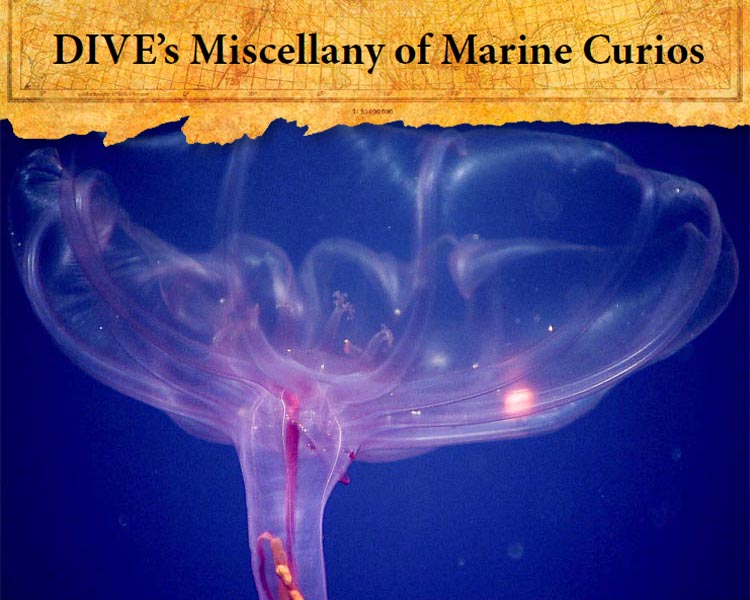
Once mistaken for an unknown species of jellyfish, Pelagothuria natatrix has a much more unusual heritage
Despite looking a lot like a jellyfish, this is, in fact, a species of sea cucumber. The translucent, pink and purple umbrella resembling the bell of a jellyfish is what enables this particular species to swim through the water.
Pelagothuria natatrix is a holothurian, a class of echinoderms with a long and tubular body – hence the reference to cucumbers. Echinoderms are described as such for their radial symmetry, as found in more commonly recognised echinoderms such as starfish, sea urchins and sea lilies. The symmetry of Holothuroidea is still present, but lengthwise, running from the sea cucumber’s ‘face’ to its rear end.
Most sea cucumbers are unable to swim, but some deep-sea species have evolved a benthopelagic lifestyle, meaning they spend most of their time on the ocean floor, but have developed appendages that enable them to swim – or take very long jumps, at least – in order to search for food.
Pelagothuria natatrix is the only known species of holothurian – in fact, the only known species of echinoderm – that is truly pelagic, in that it never stops swimming. Although little is known about these swimming sea cucumbers, they are thought to be rare and to be distributed worldwide, having been found in the Pacific, Atlantic and Indian Oceans at depths ranging from 200m to more than 4,000m.

The species was first discovered in 1891 when a specimen was collected during a deep sea trawl by the early marine research vessel, USS Albatross. They were not observed in situ, however, until 1989. Even as late as 2011, scientists on board NOAA’s Okeanos Explorer deep-sea research vessel identified a photograph of P. natatrix as an unknown species of jellyfish.
They have so far been observed to reach a maximum of 16cm in diameter, but – as with all abyssal species – are difficult to observe and even more difficult to study.
The specimen photographed in the first picture of this article was observed by the crew of Okeanos Explorer at 1,400m near the Central Pacific Basin seamount of Keli’ihananui on 6 May 2017. The second was from the same expedition, recorded close to the islands of Samoa.
Although the swimming sea cucumber is thought to be very rare, a note in the expedition’s logbook says that they had seen ‘many of these sea cucumbers’ during the voyage – so perhaps they’re not so very rare after at all, just very deep and very far away.


